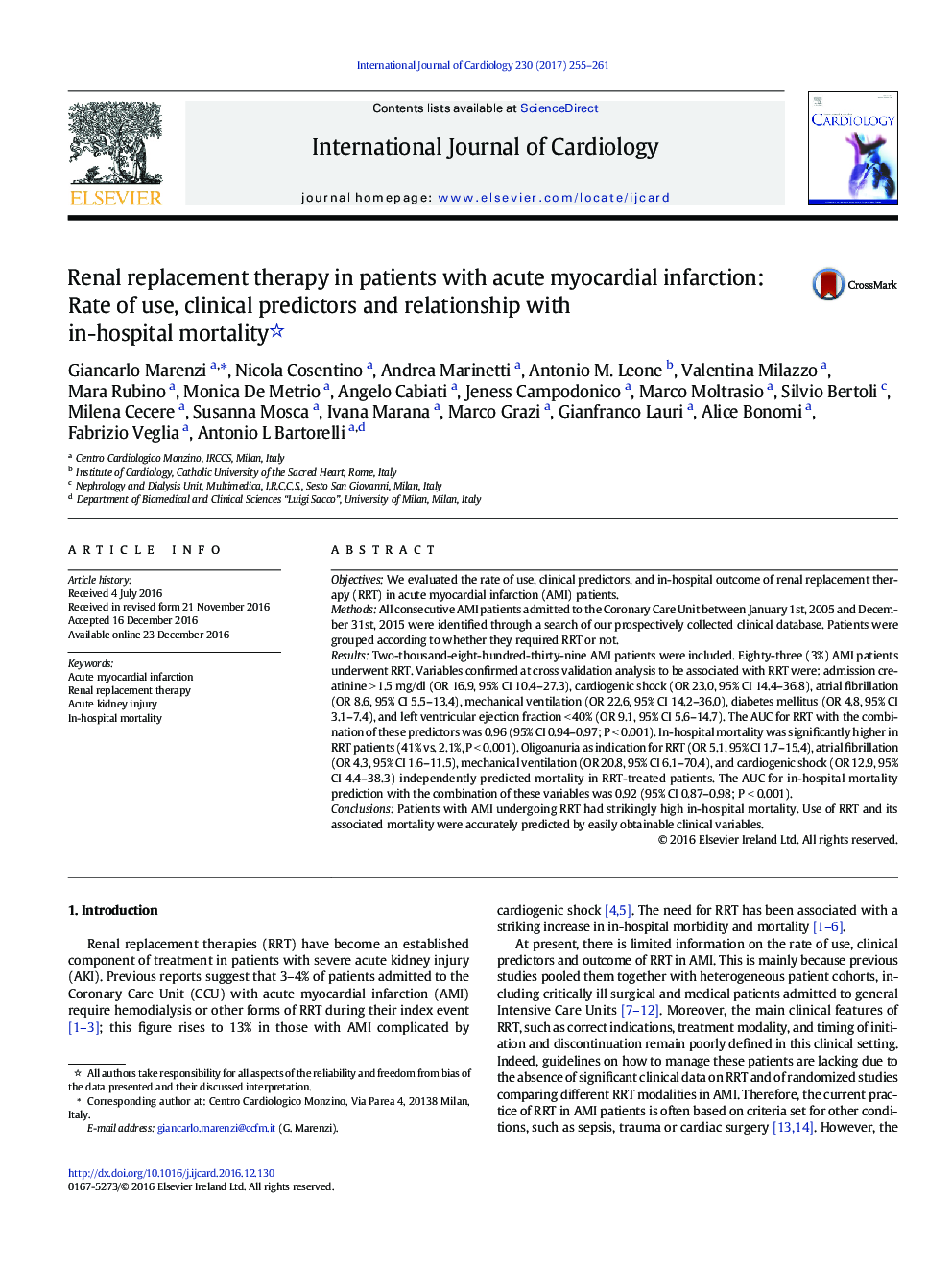| Article ID | Journal | Published Year | Pages | File Type |
|---|---|---|---|---|
| 5604784 | International Journal of Cardiology | 2017 | 7 Pages |
ObjectivesWe evaluated the rate of use, clinical predictors, and in-hospital outcome of renal replacement therapy (RRT) in acute myocardial infarction (AMI) patients.MethodsAll consecutive AMI patients admitted to the Coronary Care Unit between January 1st, 2005 and December 31st, 2015 were identified through a search of our prospectively collected clinical database. Patients were grouped according to whether they required RRT or not.ResultsTwo-thousand-eight-hundred-thirty-nine AMI patients were included. Eighty-three (3%) AMI patients underwent RRT. Variables confirmed at cross validation analysis to be associated with RRT were: admission creatinine >Â 1.5Â mg/dl (OR 16.9, 95% CI 10.4-27.3), cardiogenic shock (OR 23.0, 95% CI 14.4-36.8), atrial fibrillation (OR 8.6, 95% CI 5.5-13.4), mechanical ventilation (OR 22.6, 95% CI 14.2-36.0), diabetes mellitus (OR 4.8, 95% CI 3.1-7.4), and left ventricular ejection fraction <Â 40% (OR 9.1, 95% CI 5.6-14.7). The AUC for RRT with the combination of these predictors was 0.96 (95% CI 0.94-0.97; PÂ <Â 0.001). In-hospital mortality was significantly higher in RRT patients (41% vs. 2.1%, PÂ <Â 0.001). Oligoanuria as indication for RRT (OR 5.1, 95% CI 1.7-15.4), atrial fibrillation (OR 4.3, 95% CI 1.6-11.5), mechanical ventilation (OR 20.8, 95% CI 6.1-70.4), and cardiogenic shock (OR 12.9, 95% CI 4.4-38.3) independently predicted mortality in RRT-treated patients. The AUC for in-hospital mortality prediction with the combination of these variables was 0.92 (95% CI 0.87-0.98; PÂ <Â 0.001).ConclusionsPatients with AMI undergoing RRT had strikingly high in-hospital mortality. Use of RRT and its associated mortality were accurately predicted by easily obtainable clinical variables.
